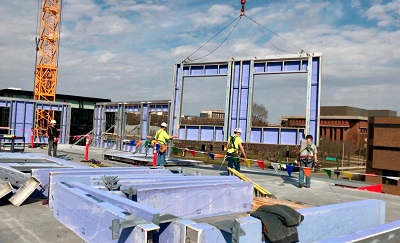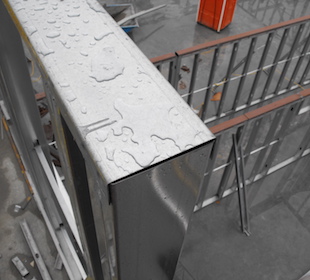- Call Us Today! 555.365.323
- |
- sales@africansteelsynergy.com

Choosing the right material to frame your next commercial project can significantly reduce costs while maintaining, or even improving, work quality and output.
Cold-formed steel (CFS) framing has a proven track record of providing sustainable benefits for low and mid-rise buildings. It also offers significant cost benefits over competitive building materials. This is especially true when the total cost of construction is considered.
Why should building professionals consider CFS framing for their construction projects?
Here are 10 advantages of steel cited by Construction Review Online:
CFS weighs 60-70% less than concrete and has the dimensional stability to maintain its structural integrity over the long term — meaning it won’t settle or sag like other structural materials.
Steel is dimensionally stable and does not expand or contract with changes in moisture content. Steel will not warp, split, crack or creep when exposed to the elements.
And, dimensional stability concerns are magnified when materials other than CFS are used in tall mid-rise buildings.
Steel has the highest strength-to-weight ratio of all structural framing materials, according to the Steel Framing Industry Association.
When CFS sheet is formed into a C-shape, like a stud or a joist, the folds act as stiffeners that increase the strength of the steel sheet dramatically. This gives CFS framing components a strength-to-weight ratio that is up to 7 times greater than that of dimensional lumber, for example.

Through panelization, CFS studs, joists, and trusses can be delivered to building sites ready to assemble, with little to no waste.
Panelization — the ability to assemble wall, floor and roof sections off-site in a controlled environment — is frequently used in CFS framing projects. It has many advantages from speeding up construction to ensuring greater quality control.
CFS framing systems offer significant cost benefits over competitive building materials when the total cost of construction is considered.
It’s a common fact that steel is non-combustible. Steel-framed structure can help safeguard your assets against fire accidents.
While the stiffness and yield strength of steel are reduced at ultra-high temperatures, modern building codes and fire protection methods take these reductions into account.

The durability of cold-formed steel, including its resistance to corrosion, mold, and vermin, gives it a longevity that few building materials can rival.
CFS framing is impervious to the environmental factors that typically threaten the integrity, lifespan and stability of other framing materials. This is a major advantage of CFS.
Steel-framed buildings provide lower maintenance and repair costs. How so?
Termite infestation, sometimes called “the silent killer,” causes more harm to buildings than fire, floods, and storms combined.
Thus, steel is arguably the best possible defense against a potentially catastrophic issue.
Since 1990, the steel industry has reduced energy intensity per ton of steel produced by 31 percent and CO2 emissions by 36 percent per ton of steel shipped, According to the American Iron and Steel Institute.
Construction is increasingly “going green.” Building owners, architects, engineers and contractors are looking for ways to construct buildings with low environmental impact. The most recycled material on the planet is steel.
Build your dream structure
Steel framing offers endless customization opportunities. You can construct your commercial building, using steel framing to achieve:
Simply describe your project goals and customization needs to a design expert. They will provide a structure to fit your request.
Technology has evolved, and steel-framed buildings are part of the mainstream.
© Copyright 2025 | All Rights Reserved.